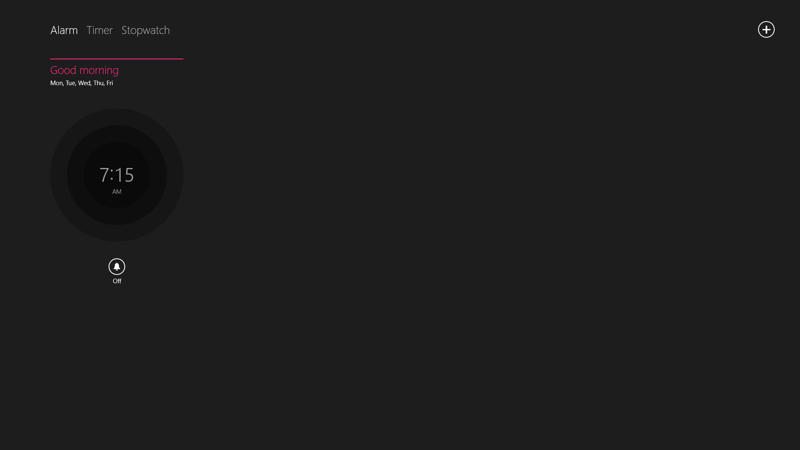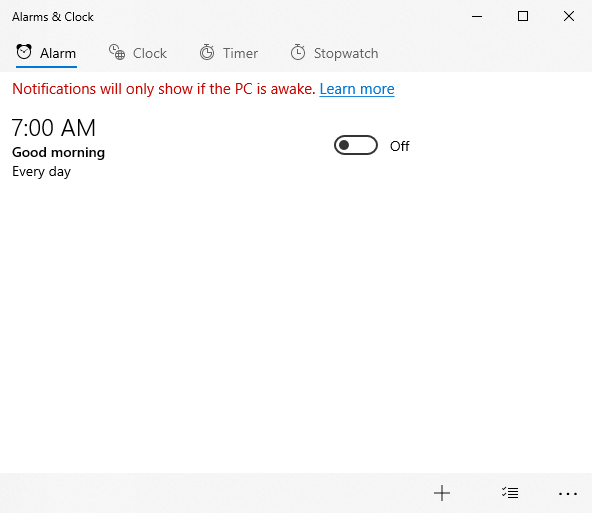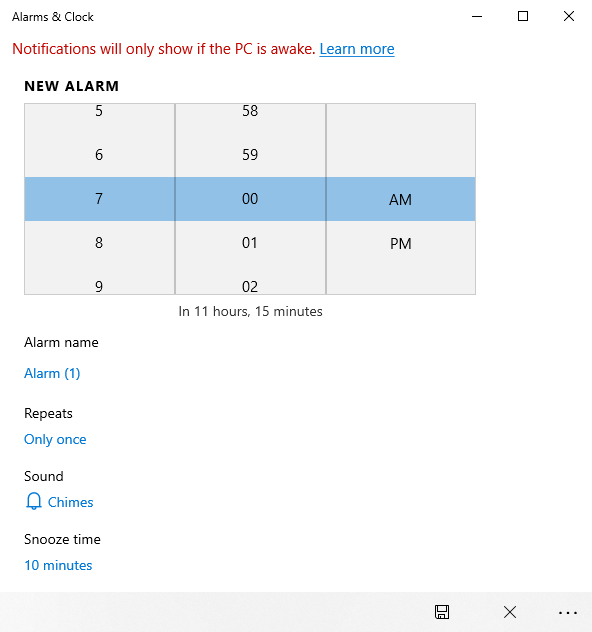If you've been using a smartphone for a while, you probably know that you can use them as an alarm clock. (I haven't used a traditional alarm clock in years!) If you are using Windows 8 or Windows 10, you can now do the same thing using your desktop computer. The trick is to display the proper app that controls the alarms. The apps are quite different in Windows 8 and Windows 10.
Setting an Alarm in Windows 8
If you are using Windows 8, the app to use is simply called Alarms. If you haven't already added the app to your Start screen, the easiest way to get to it is to press Win+C (to display the Charms bar), click the Search icon, and then, in the Search box, type Alarms. The very first result should be the Alarms app; click it. (See Figure 1.)

Figure 1. The Alarms app in Windows 8.
Make sure the Alarms option is selected at the upper-left of the screen and then click the + icon at the upper-right corner of the screen. You are then treated to a trendy, stylized clock that you can use to adjust when you want the alarm to occur. Other controls on the screen allow you to set how often the alarm occurs and what sound is used. (See Figure 2.)

Figure 2. Setting an alarm in Windows 8.
When you are done setting up the alarm, click the Save icon at the upper-right corner of the app. (The icon looks like a small floppy disk.) The alarm is automatically set and will go of at the appointed time. You can, if desired, close the Alarms app and do other work on your computer.
Setting an Alarm in Windows 10
In Windows 10 the app you use is different; it is called Alarms and Clock. To start the app, type "Alarms & Clock" (without the quotes) in the Search box which is located to the left of the Taskbar and press Enter. (See Figure 3.)

Figure 3. The Alarms and Clock app in Windows 10.
With the app displayed you can now set an alarm. You do so by clicking the Alarm tab, near the upper-left corner of the app. Then, click the + icon at the bottom-right corner of the app. You then see a screen that allows you to specify how and when the alarm should occur. (See Figure 4.)

Figure 4. Adding an alarm in Windows 10.
Use the controls to specify (at minimum) the name and time for the alarm. You can, if desired, mess with the other controls to modify what happens when the alarm time is reached and if you want it to repeat.
When you are done setting the information for the alarm, click the Save icon; it looks like a small floppy disk near the bottom-right corner of the app. The alarm is automatically set and will go off at the appointed time.
![]()
![]() This tip (10684) applies to Windows 8 and 10.
This tip (10684) applies to Windows 8 and 10.
Ghost Control is a nice utility when you need to save your keystrokes and mouse movements while doing repetitive tasks. ...
Discover MoreAre you frustrated by your desktop icons moving around whenever you change your screen resolution or use Remote Desktop? ...
Discover MoreSyncToy allows you to keep multiple pairs of folders in sync. This means it can also serve as a decent file-backup ...
Discover More2019-07-29 06:12:36
Barry
For the alarm to work of course your PC must be turned on (and not in "Sleep" or "Hibernate" mode), and to be effective it must be within earshot (most people don't have their PC on their bedside table), and loud enough to be heard.
Copyright © 2025 Sharon Parq Associates, Inc.
Comments